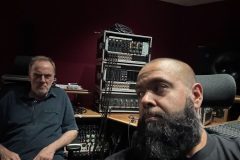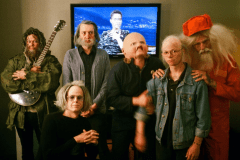KILL TEAM (Games Workshop)
Assassinations. Prisoner rescue missions. Intelligence recovery. Disrupting supply lines. In the dark landscape of the 41st Millennia, not every battle is fought by towering Imperial Knights and Gorkanauts. Some missions call for an elite squad of a dozen or so specialists, fiercely dedicated to their mission regardless the cost. These are known as Kill Teams.
Much of Kill Team is played in a similar manner as the latest edition of Warhammer 40,000. Each model has its own profile of Movement (how many inches a model may move), Weapon Skill (what a model must roll to hit in hand-to-hand combat), Ballistic Skill (what a model must roll to hit when shooting), Strength and Toughness (used in determining rolls to wound), Attacks (how many dice a model rolls in hand-to-hand), Leadership (used in the Morale Phase) and Save (what a model must roll to avoid a wound). Players use these skills and rolls to stab, snipe, stealth and strategize their army to victory.
However for all its similarities, Kill Team does have a number of squad and specialist level differences from Warhammer 40,000. Though a knowledge of Warhammer 40,000 is not needed to play Kill Team, the following summary focuses on some of the key differences between the two games.

Divided into six phases, each round of Kill Team starts with an Initiative Phase with players rolling off to see who goes first. Then in all following phases that round, starting with the player who won initiative, players take turns alternate activating a single model at a time.
The Movement Phase is handled much as in Warhammer 40,000 with the notable exception that players can “Ready” an unmoved model in a manner similar to role playing games, giving them a later advantage in the Shooting Phase.
The Psychic Phase is also similar with rolls to manifest or deny powers, though many differing race Psychic Powers have been limited for ease of game play.
The Shooting Phase now allows models to target any enemy model within range with negative modifiers for cover and long range (over half of the distance for the firing weapon), both giving Kill Team a more “Guerilla Warfare” feel where cover is key to staying alive.

Next the Fight Phase is almost identical to that of Warhammer 40,000 with the exception that models are activated one-by-one instead of squad-by-squad.
The last phase in a round is the Morale Phase, where players check to see if their Kill Team is broken from mounting casualties. Being Broken puts Teams in a rough spot with mounting negative modifiers and Shaken statuses rendering models immobile for the coming round.
Beyond the in game differences for Kill Team, the real fun comes from the customization of Teams. For all of the tales of towering Space Marines and Savage Orks, Kill Team makes you feel like you’re commanding the universe’s most elite warriors. Models are no longer faceless soldiers sent out into the Grimdark to either return or not, but named killers in tactical Kill Teams on specialist missions of galactic importance. Each weapon and skill is chosen (and developed in a Campaign) and every roll made for “Out of Action” is a wincing blow to the Team.
Games Workshop has further added to this customization with Kill Team faction boxes, featuring a squad of models along with unique terrain, special rules and tactics, and datasheets for each member. Using the same models as those from the Warhammer 40,000 catalogue, these boxes are not necessary but do add further specialization to a game that is enriched by it.

Over the last two years Games Workshop seems to have no shortage of solid game ideas. Delving into their own out-of-print catalogue and creating new stand alone games, the company is churning out amazing ways to play faster than most of us can keep up with assembling and painting. It’s both exciting and a little concerning to see so many new titles hitting shelves with worries about market sustainability and product support. Kill Team itself comes on the heels of Shadow War: Armageddon, another squad based set of rules for playing Warhammer 40,000. But as long as the hits keep coming, it’s hard to complain about continuing to get too much of a good thing. (Games Workshop) by David C. Obenour







Social Media